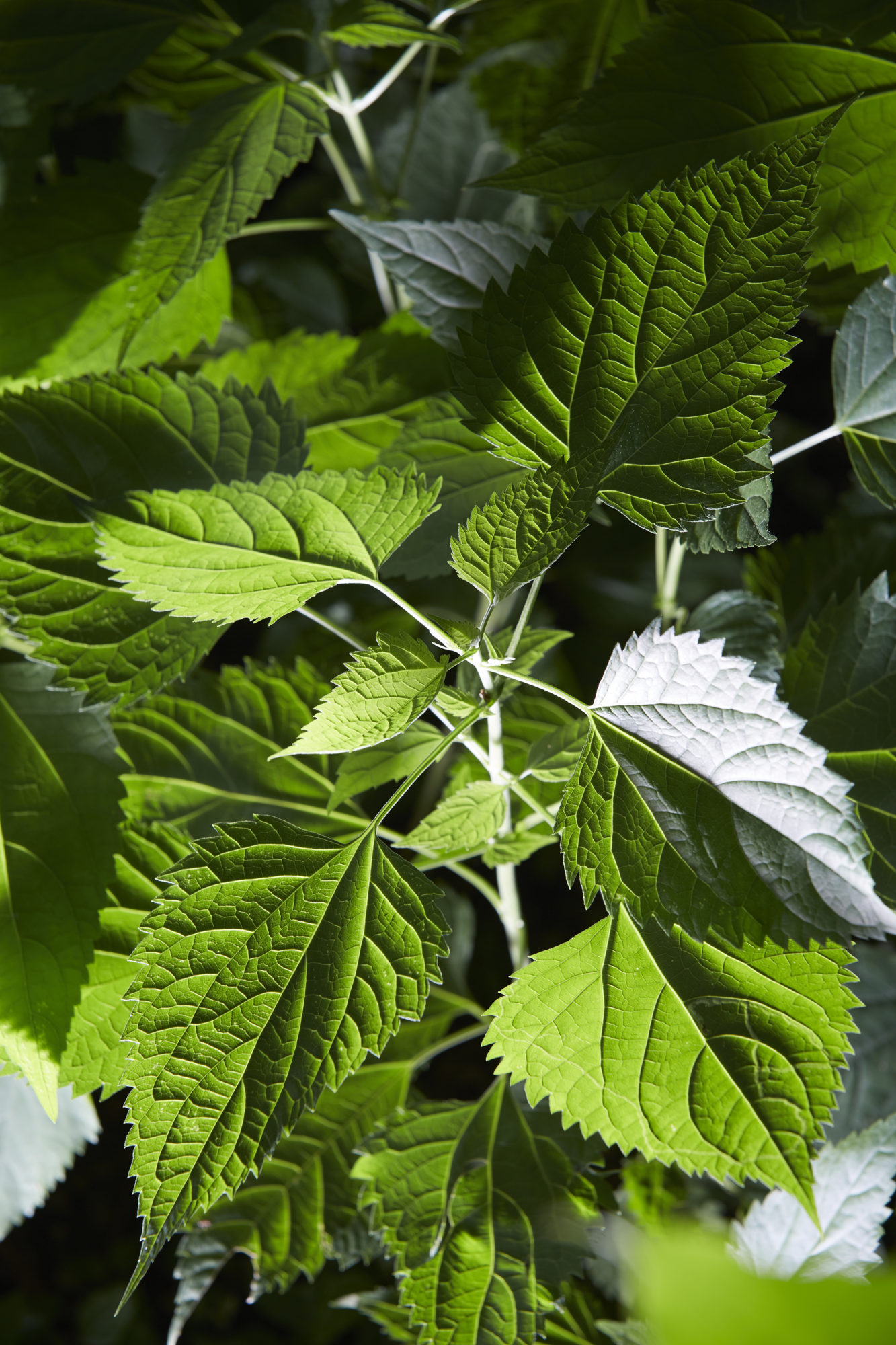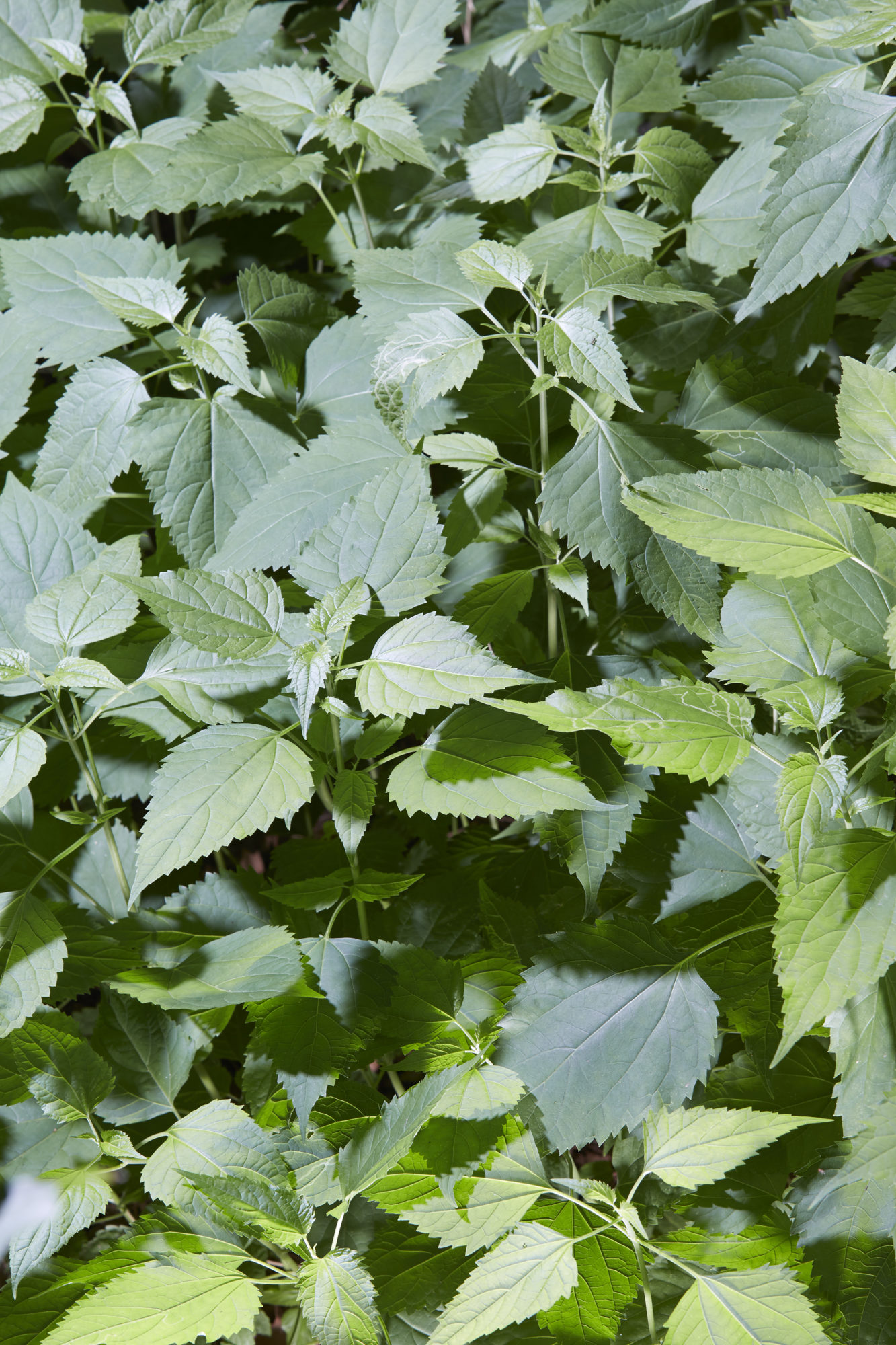Idle Weeds are Fast in Growth
All images: Roe Ethridge, Weeds, 2015 [courtesy the artist]
Share:
Roe Ethridge was born in Miami; his family moved to Atlanta when he was young, but remained Floridian (the Ethridges, like the Camblins, are Seminoles fans). He received a BFA in photography from the Atlanta College of Art in 1995, and later that decade exhibited as part of several group shows at Nexus Contemporary Art Center in town—including the short—lived Atlanta Biennial. Perhaps because he was more compelled by the Düsseldorf school of photography, which produced Thomas Struth and Candida Höfer, than he was by the Nan Goldin approach that was in vogue stateside at the time, he also showed in Munich and Zurich before being curated into Klaus Biesenbach’s first Greater New York survey, which opened at PS1 in 2000, shortly after the Long Island City space became a Museum of Modern Art affiliate. His work caught the eye of major fashion houses and magazines and has long been associated with stillness, artifice, and veneer, though whether that is a cause or an effect of the fashion connection, I don’t know. What sets his editorial work apart from others’ is its Warholian penchant for the “exactly wrong,” an affinity that is consistent in his commercial and artistic photography—not that these modes can be distinguished per se.
Last year, Ethridge had more or less concurrent exhibitions at Capitain Petzel in Berlin and Andrew Kreps in New York; both shows were called Sacrifice Your Body and had to do, at least to some degree, with his mother, or possibly womanhood more generally. The exquisite publication produced by Mack Books, London (February 2014) to accompany the project includes an image of a Dodge Durango sinking into a canal in Belle Glade, FL, where Ethridge had traveled to photo-document his mother’s hometown. It also has an untitled photograph of a model wearing pink—a pencil skirt, a ribbed turtleneck—and Alexis Bittar jewelry, posing against an off-domestic backdrop of (faux?) wood paneling and midcentury floral-patterned curtains.
It was because of the way leftovers from fashion shoots creep into Ethridge’s gallery existence that ART PAPERS asked him to make selections from editorials that didn’t make it to print as planned, and to give the “rejects” to us instead. It wasn’t a vengeful or boastful idea; it was about embracing an interest in marginalia, because we like to like what others think of as “wrong.” So it is with good reason that this concept didn’t materialize—because it wasn’t time, or because it has been happening the whole time—and that we have a few pictures of weeds instead, shot in the garden behind his studio in Fort Greene, Brooklyn. This is how the editorial process works at its most authentic, for the photographer-editor, and for editors of other things.
Roe Ethridge: The photographer is there, taking pictures, but it’s the magazine editor that goes back through. And you know the editor is going to be there. Still, you think, “This is an amazing opportunity; I’m working with a model who is like the Venus of our moment,” and you hope something’s going to work out. Then you have the whole story editing process, and it’s a crazy pain in the ass. Afterwards, the images need some time to separate from their purpose so that they become free again. During that time you’ve been starting to think about other projects again—you notice there is a theme running between them, maybe. It’s like taking the captions off, so that Roe the editor can come and say, hmm, I’ve got these eight pictures, and this one is part of the story line here, and it’s already in the inventory, just waiting for me to sort of activate it by putting it in that new context. You know what I mean?
Victoria Camblin: Absolutely. You can completely change the form of a project with editing, and sometimes that involves just letting something rest by itself out of the context in which it was conceived or commissioned. Sometimes it’s a survival mechanism, too—or more precisely, necromancy. You can resurrect things that you thought were dead. I think you might be doing that, too. Texts, or images, can come back as these autonomous objects, and then you can assign them to new cliques.
RE: It is musical, too, in a way—when there’s harmony, two chords instead of one. I shot some weeds in the backyard at the studio this summer. I won’t be shooting them every day, just over the next few months, probably.
VC: That’s a little along the lines of looking at rejected edits or other uncultivated projects—unwanted things that have been left to vegetate and that might be able to be made desirable through an edit. It’s like the kudzu in Atlanta, or everywhere in the South: it overgrows things, and you can cut it away or you can wait and see what shapes the overgrowth makes itself. Usually you end up doing a little bit of both. Again, this unwanted thing can become its own little agent.
RE: Did you read that Michel Houellebecq novel The Map and the Territory? It’s about an artist who is this kind of Bruce Nauman type, and he’s making a video montage of all this vegetation. The idea is that vegetation will reign without us. You know, like there’s nothing that can be done. Roads will be gone. Everything will be gone, but vegetation will overtake. Where it can, it will.
VC: It’s a pretty safe kind of catharsis, isn’t it? Weeding? It feels like you are creating instead of eliminating because you are getting rid of something that’s not going to go away forever. Editing is like that, too. If you throw out a story, it’s not necessarily permanently gone; even if it never goes to print, the content grows back somehow, through cracks and spaces between lines.
RE: Well, in the spring, I pulled up all the weeds behind my house and behind my studio and was sort of proud of it. Two weeks later I turned around and there were all these fucking weeds there again, and they were like three feet high, and there were even more than before. So it can be painful. But there’s something about looking down at the ground that feels sort of like “starting over” or something—like looking down at the weeds is a healthy thing to do.
Victoria Camblin is ART PAPERS editor and artistic director.

